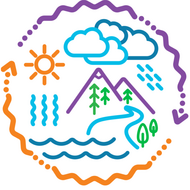PEI SOLS 5th grade Food Waste (Spanish)
(View Complete Item Description)Mientras que el desperdicio de comida no es típicamente visto como un contribuyente de emisiones de gas de efecto invernadero, es un contribuyente mayor. Reducir el desperdicio de comida es la 3era solución más beneficiosa para la reducción de dichos gases. La comida desperdiciada y los recursos para producirla, son responsables del aproximadamente 8% de las emisiones globales de gases de efecto invernadero. Cuando los individuos y grupos reducen el desperdicio de comida, esto tiene un gran impacto en la reducción de emisiones de gases de efecto invernadero. La conciencia del desperdicio de comida es aplicable a cada persona y comunidad. En este caso, los estudiantes van a conducir una “auditoría de desperdicio de comida”. Cada clase de estudiantes participantes recolecta, clasifica y mide su desperdicio de comida por un día durante el almuerzo. Los estudiantes discuten las causas locales y globales y los efectos del desperdicio de comida en el ambiente. Los estudiantes también aprenden las conexiones culturales alrededor del desperdicio de comida de los expertos o gente mayor de las tribus locales, e indagan cómo las diferentes agencias en la comunidad lidian con el desperdicio de comida (e.g. tiendas de abarrotes, bancos de comida, la ciudad). Los estudiantes presentan sus resultados y crean un plan de acción.
Material Type: Unit of Study



















